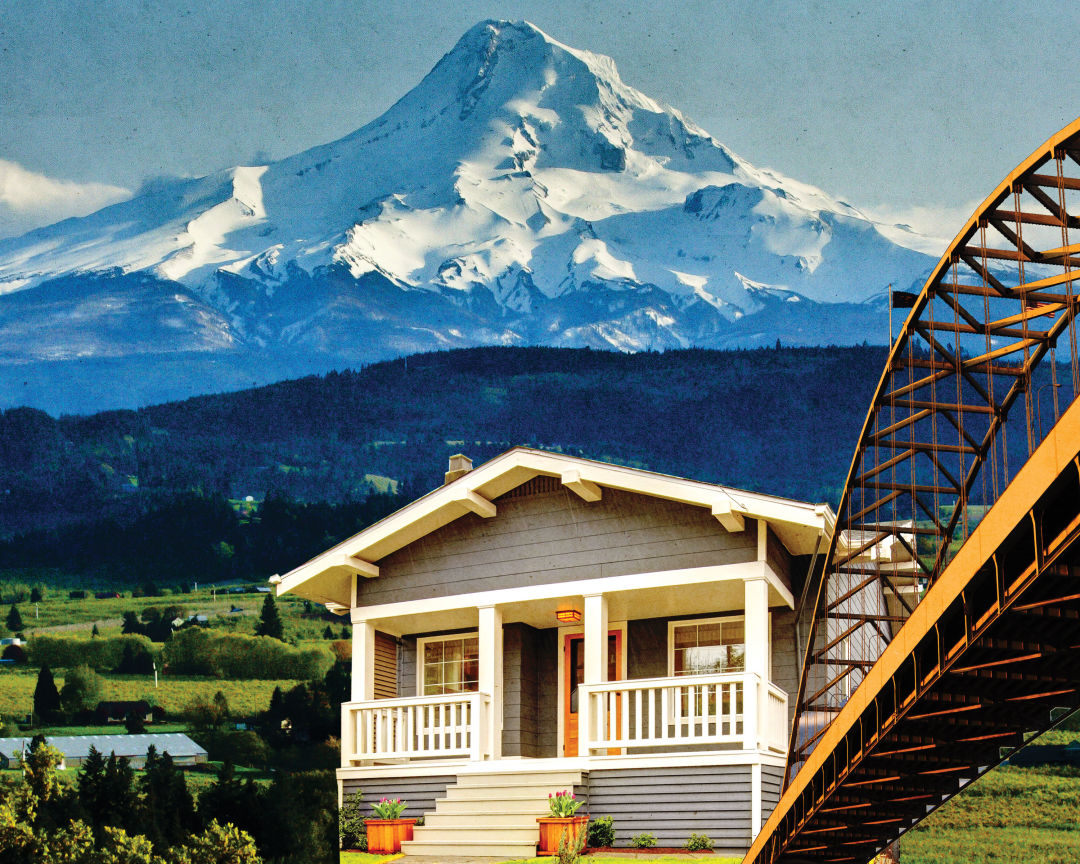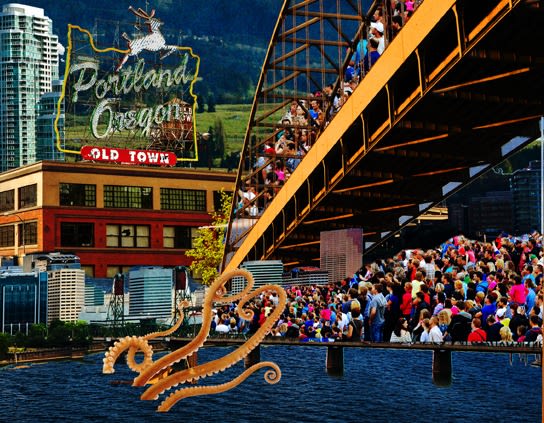Fascinating article in Portland Monthly about the changes coming to Portland – enjoy!
Portland is Changing Faster Than You Can Believe
Here are five big game changers already in the works.
1) Our River Is About to Get the Most Extreme Makeover Ever.
By the end of 2016, after decades of discussion, plans will take shape for a massive, federally mandated cleanup of the Willamette River. Portland’s waterway is currently awash with industrial PCBs, heavy metals, dioxin, and other contaminants. It’s likely the cleanup (shorthand: Superfund) will take decades, with cost estimates running as high as $2.5 billion. (Figuring out which of about 150 companies and government entities historically responsible for the pollution still exist, and who will pay what to fund the cleanup, is a major challenge.) The mandatory monitoring will continue for … oh, 100 years. At stake in a process that will run beyond 2116? “The river is a major economic engine,” says Michael Jordan (not that one), director of the city’s Bureau of Environmental Services. “To meet our population and employment projections, thousands of jobs need to be produced around the river. Add in risks to the environment and human health, and this is significant.”
2) Portland Is About to Rewrite Its Own Blueprint.
As the Portland City Council readies to vote on a new “Comprehensive Plan” to guide development of the entire city, relish the differences, in specifics and zeitgeist, between the new plan and its predecessor, adopted 36 years ago.

- Pages Then: 34
- Pages Now: (draft) 270
Vision Statement
- Then: “Portland is more than a geographic area—it is a way of life.”
- Now: “Portland is a prosperous, healthy, equitable and resilient city where everyone has access to opportunity and is engaged in shaping decisions that affect their lives.” (Subtext: Portlandia: it’s really a sequel.)
Projected Growth
- Then: Population: 368,148 Projected – 20-year growth: 45,000 (Actual 20-year growth: 54,000—or 160,973 counting annexations)
- Now: Population: About 610,000 Projected 20-year growth: 260,000 (Subtext: Squeeze in. The elevator’s going up!)
The Glossary
- Then: What glossary?
- Now: 152 words or phrases defined, from “mode split” to “Portlander” (Sample: “Continue—Persist in an activity or process.”)
Neighborhood Involvement
- Then: 162 words. Sample: “Encourage citizen involvement in land use planning projects by actively coordinating the planning process with relevant community organizations.”
- Now: 2,554 words Sample: “Maintain partnerships and coordinate land use engagement with: individual community members; communities of color, low income populations, Limited English Proficient (LEP) communities, Native American communities, and other under-served and under-represented communities … ” (It keeps going. And going.)
Geeky Lingo
- Then: “Nodes and Noodles”
- Now: “Centers and Corridors” (Our old plans were funnier.)
3) Affordable Housing’s secret? Trust.
Searing-hot home and rental markets can look pretty doomy to housing advocates, not to mention low-income Portlanders looking for places to, y’know, live. But some strategies have already proven themselves.

The nonprofit Proud Ground, for example, has used a property structure called a community land trust to make about 260 metro-area homes “permanently affordable.” Typically, the organization—in partnership with governments, other nonprofits, or both—buys an existing home as it comes on the market. After any necessary repairs, the home is sold to a low-income buyer, with as little as $500 down and a fixed mortgage. (Median monthly payment: $1,037.) The trust structure allows the buyer to build equity—$60,000 over 10 years on average, the organization estimates. But Proud Ground also shares the equity, an arrangement which allows the home to be sold at below market rates when the original owner is ready to move on.
“The housing stock is out there,” says Diane Linn, Proud Ground’s executive director. “We’re going to advocate at every level of government and use every tool we can to add properties to our portfolio.” The aspirational goal: 400 homes by 2020.
4) The Edge Will Be the Center.
In Portland’s development boom, former fringe zones will become hotbeds of action.
Lents
THE WAY IT WAS The Southeast neighborhood oft derided as “Felony Flats,” long a go-to example of revitalization dreams deferred
CHANGE AGENTS In 2014, the Portland Development Commission jump-started lumbering renewal with a capital-letter-optimized “Five-Year Action Plan.”
THE VISION “I think we’re cementing this as a vibrant neighborhood,” says outgoing PDC director Patrick Quinton. “Now we need to think about how to execute our plans while maintaining the character of the community.”
BIG MOVES Coming to SE 91st and Foster: the 34,200-square-foot Asian Health and Service Center, with design by Holst Architecture; a trio of mixed residential and commercial buildings involving veteran developers Williams/Dame and Palindrome and respected architecture firms Hacker and Ankrom-Moison.

Downtown’s Southern Edge
THE WAY IT WAS A sleepy village around Portland State, girdled by a highway, enlivened only by a Cheerful Tortoise (the 64-year-old, just-off-campus sports bar)
CHANGE AGENTS PSU is renovating and building like mad, and MAX, streetcar, and bus lines have made this the city’s busiest transit hub.
THE VISION “Ten years from now,” says Portland State spokesman Scott Gallagher, “it will be hard to distinguish between the core of downtown and the south end.”
BIG MOVES The $60 million renovation of PSU’s business school will turn a bunker-like building into an airy sustainability showcase by 2017. That same fall, the retrofitted Viking Pavilion will reopen as a 5,500-max-capacity arts and sports venue. Buildable lots at PSU’s eastern edge—like SW Fourth and Harrison—will sprout mixed-use density.
The Broadway Corridor
THE WAY IT WAS The Northwest Portland seam between the Pearl District and Old Town, rendered comatose by the hulking, 14-plus-acre US Postal Service headquarters complex
CHANGE AGENTS After years of trying, PDC is finalizing an $88 million deal for the Postal Service site.
THE VISION A dense neighborhood that knits the Pearl to the Rose Quarter. “You can reweave sites that have been islands in the city,” Quinton says.
BIG MOVES While design details are very much TBD, the agency envisions the USPS land as high-rise developments, extended North Park Blocks, and a huge batch of new housing, designed to complement Union Station and kick-start vacant lots on either side of Broadway.
5) One Temple’s Doom Signals a Battle Over History.
Late last year, the circa-1892 Ancient Order of United Workmen Temple—an imposing brick hulk in the Richardsonian Romanesque style at SW Third and Taylor—became the latest in a string of historic local icons (including Centennial Mills, the Portland Building, and Veterans Memorial Coliseum) threatened with demolition. The tipoff came when the temple’s new owner, development firm T&T, had the building removed from the city’s Historic Resource Inventory—a list of buildings that, in theory, can’t be demolished until after a stipulated 120-day waiting period.

After an appeal by the preservationist group Restore Oregon, developers agreed to wait out the 120 days before dismantling the building to clear the way for a hotel and offices. According to T&T’s Jeff Arthur, salvation just won’t pencil out. “It’s one of the tallest unreinforced masonry buildings in the city. ‘Seismic’ wasn’t a word when they built this,” Arthur says. “We’re still continuing to evaluate, but we’re definitely leaning at this point toward taking it down.”
For preservationists, Workmen Temple’s demolition may be a call to action. Jillian Detweiler, a spokeswoman for Mayor Charlie Hales, says the city intends to close the loophole that allows owners to remove buildings from the Historic Resource Inventory. And Restore Oregon’s Peggy Moretti argues the state needs “more carrots and more sticks” to make historic preservation feasible. “In every other state, local jurisdictions have a say in designating what’s historic,” she says. “And other states would have more financial incentives at their disposal.” But moves to constrain developers could be a tough sell: legislation backed by Restore Oregon, which would have provided incentives to renovate historic commercial buildings, failed last year. Meanwhile, it’s likely that by this summer, the onetime fraternal clubhouse will literally become history.
http://www.pdxmonthly.com/articles/2016/3/25/portland-is-changing-faster-than-you-can-believe
 Facebook
Facebook
 X
X
 Pinterest
Pinterest
 Copy Link
Copy Link
